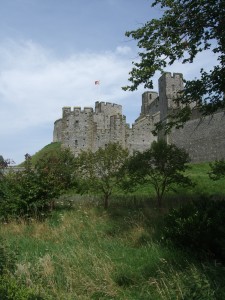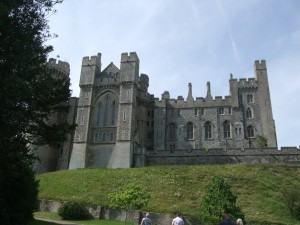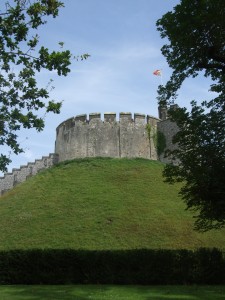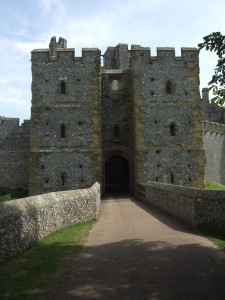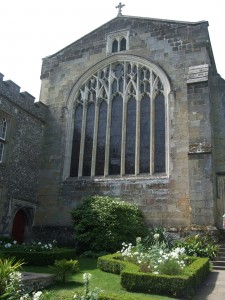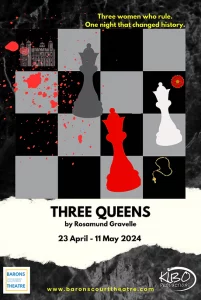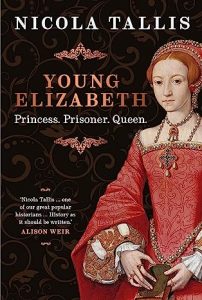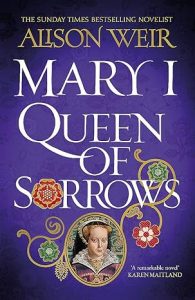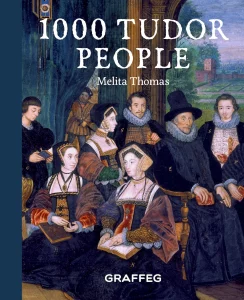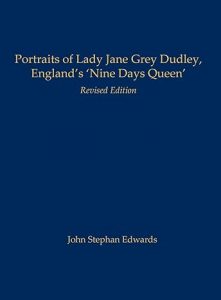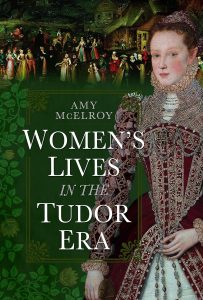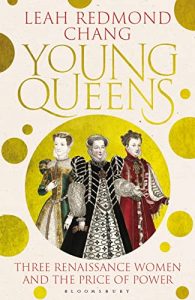Last summer we visited Arundel Castle in West Sussex. It was thanks to Suzannah Lipscomb’s, ‘A Visitor’s Companion to Tudor England’, that we chose this castle and also knew what to look out for.
She writes:
‘There has been a castle here since soon after the Battle of Hastings, as the gatehouse, dating from around 1070, testifies. …The house itself is an exceptional example of Gothic architecture in the nineteenth century….it is only the medieval castle, and the Fitzalan Chapel in the grounds, that would have been familiar to the Tudor visitor’ (p.121, Lipscomb).
The Keep
Lipscomb writes, ‘The stone keep and parts of the curtain wall you see now were built by William de Albini in the early twelfth century out of Caen stone from Normandy…Queen Matilda would have seen this when she visited the castle in 1139’ (p.121, Lipscomb
According to the castle guide book: ‘The Keep is an open shell of oval plan, 59 feet by 67 feet and 30 feet high…It was built of Caen stone by William de Albini, shortly after his marriage to Adeliza of Louvain in 1138, on top of the original post-Conquest motte’ (p.14, Robinson).
The Gatehouse Tower
‘The Gatehouse Tower is, apart from the earthworks, the oldest part of the castle…It is four storeys high with two taller turrets on the outside face containing spiral staircases….The Gatehouse was the residence of the Constable of the Castle…the first-floor apartment was his principal room. Since the 18th century it has been known as ‘Queen Matilda’s Room’ after the Queen-Empress, daughter of Henry I, who may have stayed here with her step-mother Adeliza of Louvain’ (p.11, Robinson).
Queen Matilda
Lisa Hilton writes that during Adeliza’s (widow of Henry I) second marriage to William d’Aubigne ‘they lived mainly at her dower castle of Arundel on the Sussex coast’ (p.77, Hilton).
She goes on to describe how ; ‘In September 1139, the Empress, her brother and a company of Angevin knights landed on the Sussex coast….The choice of Sussex for the launch of the Empress’s campaign was dictated in part because the Queen Dowager, Adeliza of Louvain, had shown support for her cause. According to William of Malmesbury, Adezila and the Empress had been in correspondence for some time, and Adeliza now defied her second husband, William d’Aubigne, a staunch Stephenite, to offer the Empress protection at their seat at Arundel Castle’ (p.91, Hilton).
The Barbican
‘…the squared towers either side of the entrance gate and the Bevis Tower date from the late fourteenth century (p.121, Lipscomb).
The Fitzalan Chapel
The guide book states that ‘The Fitzalan Chapel was founded in 1380 by Richard, 4th Earl of Arundel in accordance with his father’s intention, as a collegiate chapel served by secular priests….In the reign of Henry VIII the college was dissolved; the chapel and other buildings were returned to the family and have been the private property of the Earls of Arundel and the Dukes of Norfolk ever since…The major artistic interest of the Fitzalan Chapel lies in the tombs of the Earl of Arundel and Dukes of Norfolk which form some of the finest assemblages of their kind in England.’ (p.42, Robinson)
The Howards
Arundel Castle was included in Dr Lipscomb’s book because although ‘…in truth, it is more Norman and Victorian than Tudor…On the other hand, it is one of the only surviving homes (Framlingham and Charterhouse are the others) of the Howards, arguably the most ambitious, egotistical and powerful of all the Tudor families, and so it must be included in a visit to Tudor England’ (p.120, Lipscomb)
In the picture gallery, you can see paintings of:
Thomas Howard, third Duke of Norfolk
Henry Howard, Earl of Surrey
Thomas Howard, fourth Duke of Norfolk
The Dining Room
On show in the dining room are items that once belonged to Mary Queen of Scots.
The guide book states:
‘In the case are also displayed some of the greatest treasures at Arundel, the unique assemblage of objects relating to Mary Queen of Scots….The rosary beads of gold and enamel were carried by Mary at her own execution at Fotheringhay Castle and bequeathed by her to Anne, Countess of Arundel, wife of Sir Philip Howard. The pomander rosary beads are also 16th century. The gold cross was bought by Mary Howard…in 1696 from a Benedictine monk in Paris. It was reputed to have been given by Mary to Abbot Feckenham, the last Abbot of Westminter, who was imprisoned in the Tower from 1560 to 1584…Her prayer book, with 16th-century illuminations, was given to Lord Herries by Mary after the Battle of Langside in 1568 when she sought refuge in his house at Terregles’ (p.26, Robinson).
Ante Library
A nice Tudor bonus, were the miniatures on display in a cabinet in this room.
Mary Tudor (Sister of Henry VIII)
Charles Brandon
Henry Grey (Duke of Suffolk)
Frances Brandon (Countess of Suffolk, wife of Henry Grey, Earl of Suffolk 1554, mother of Lady Jane Grey) *
Thomas Howard (3rd Duke of Norfolk)
*I’m not sure if they were Countess and Earl of Suffolk? Duke and Duchess of Suffolk, yes.
Library
There were more Tudor treasures on display in the Library. These included a copy of the death warrant of Thomas Howard, 4th Duke of Norfolk, signed by Elizabeth I and miniature portraits of Elizabeth Stafford (wife of Thomas Howard, 3rd Duke of Norfolk and daughter of Edward, Duke of Buckingham), Thomas Howard, 4th Duke of Norfolk and Thomas Lord Seymour of Sudeley and Mary Queen of Scots.
Also on display in the castle was a portrait of Elizabeth of York but I can’t remember what room it was in!
I have to agree with Suzannah Lipscomb that Arundel Castle is ‘hard to beat for a cultural day out’ (p.120, Lipscomb).
Sources
Hilton, L. (2008) Queens Consort: England’s Medieval Queens, W&N.
Lipscomb, S. (2012) A Visitor’s Companion to Tudor England, Ebury Press.
Robinson, J M. Arundel Castle: Ancient Castle, Stately Home and Gardens, Arundel Castle Trustees Ltd.

